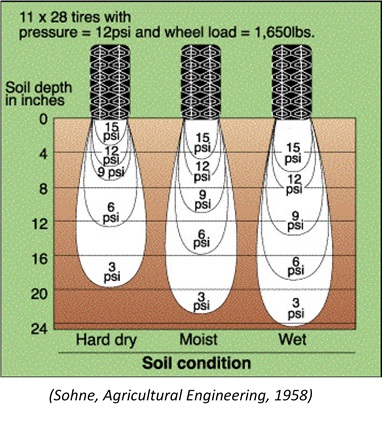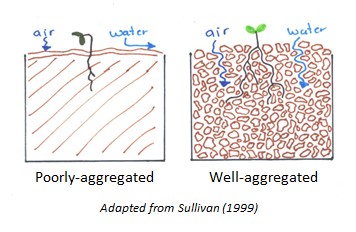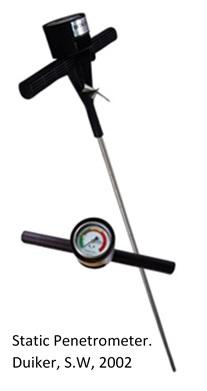Soil Compaction
 Soil compaction can be a symptom of poor soil health and can become a more difficult issue to combat if it is not addressed. Compaction can diminish a plant’s ability to uptake water and nutrients, reduces the soil’s natural erosion defence, and ultimately can result in a sub-optimal crop.
Soil compaction can be a symptom of poor soil health and can become a more difficult issue to combat if it is not addressed. Compaction can diminish a plant’s ability to uptake water and nutrients, reduces the soil’s natural erosion defence, and ultimately can result in a sub-optimal crop.
Soil compaction can be a limiting factor in many agricultural systems, especially those that require multiple passes of large agricultural vehicles and equipment. In wet conditions, heavy machinery has even more potential to cause soil compaction at deeper intervals, which in turn makes compaction issues more difficult to mitigate. Reducing passes, axle weight, and tire pressure can all help in combatting excess soil compaction.

Tight clumps of soil held together by root exudates and other organic matter are known as soil aggregates. Soil aggregates are key in maintaining a healthy soil structure, as they regulate air and water flow, increase water holding capacity, and protect the soil from excessive erosion. When soil is disturbed (through tillage and compaction), those aggregates are broken, which in turn can make the soil easier to compact. To learn more about soil aggregate stability, view the PEI Soil Health Test: How to interpret your results factsheet..

To test your own fields for compaction, a penetrometer can be borrowed from PEIDA. For more information and details on how to use a penetrometer to measure soil compaction, view the Compaction and Soil Health fact sheet.
Information Fact sheets:
- Compaction and Soil Health
- Using Penetrometers to Measure Soil Compaction
- Data Sheet for Static Penetrometer PSI Reading per Depth
- Field Compaction Data Interpretation Tool
For more information, contact:
Hardy Strom
Soil Health Research & Development Coordinator
PEI Department of Agriculture
Email: hastrom@gov.pe.ca (link sends e-mail)
Phone: 902-314-0791
